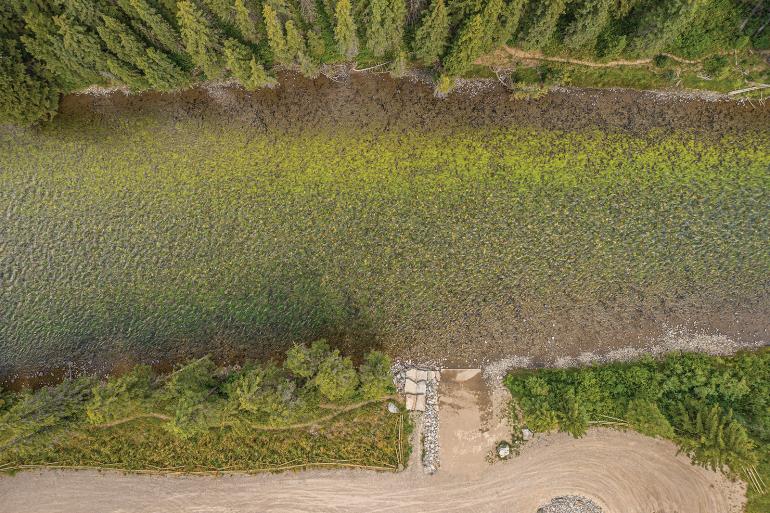Green Monster
Finding hope for the Gallatin River.
In early 2023, several local conservation groups—the Gallatin River Task Force (Task Force), Upper Missouri Waterkeeper, Greater Yellowstone Coalition, American Rivers, and Montana Trout Unlimited—signed a petition that prompted the Montana Department of Environmental Quality (DEQ) to list the Gallatin River’s water quality as “impaired.” Subsequently approved by the Environmental Protection Agency, the decision simultaneously raised a host of concerns, questions, and hope for the future of the river.
Specifically, the 39-mile section of river from the northwest border of Yellowstone to the confluence with Spanish Creek was identified as having excessive algae growth, which can harm aquatic life such as trout. There are a multitude of factors that influence algae growth, including low streamflow, excess nutrients, abundant sunlight, and warm water and air temperatures. Understanding how all of these factors work together is critical to identifying what can be done to reduce algae growth on the Gallatin.
The Task Force has been working toward that understanding with two decades of data collection, along with compiling the photo documentation (with help from the Upper Missouri Waterkeeper) necessary to set the “impaired” designation process in motion. With the listing now in place, it provides the resources to identify the causes of the impairment, and unlocks potential funding to develop effective solutions. The DEQ and the Task Force are already expanding their water-monitoring efforts and planning how to implement river-health improvement projects.
Additionally, the impairment listing initiates the development of a Total Maximum Daily Load plan, which identifies the amount of pollution a river can sustain while still supporting beneficial uses. Once developed, a community-driven planning process will develop a Watershed Restoration Plan (note, however, that the Task Force and other community partners have already begun to execute projects to address algae growth).
We know from positive outcome examples, like the Deep Creek tributary of the Missouri River, that impairment listings and subsequent pollution-load & restoration plans can improve the health of rivers. Listing a river as impaired brings it needed attention and resources. There is work ahead, and long-term changes to the health of the Gallatin River won’t happen overnight; but with the right tools in motion, there is a healthy future ahead for the Gallatin.
Kristin Gardner is the chief executive and science officer for the Gallatin River Task Force, a position she has held for nearly two decades.











